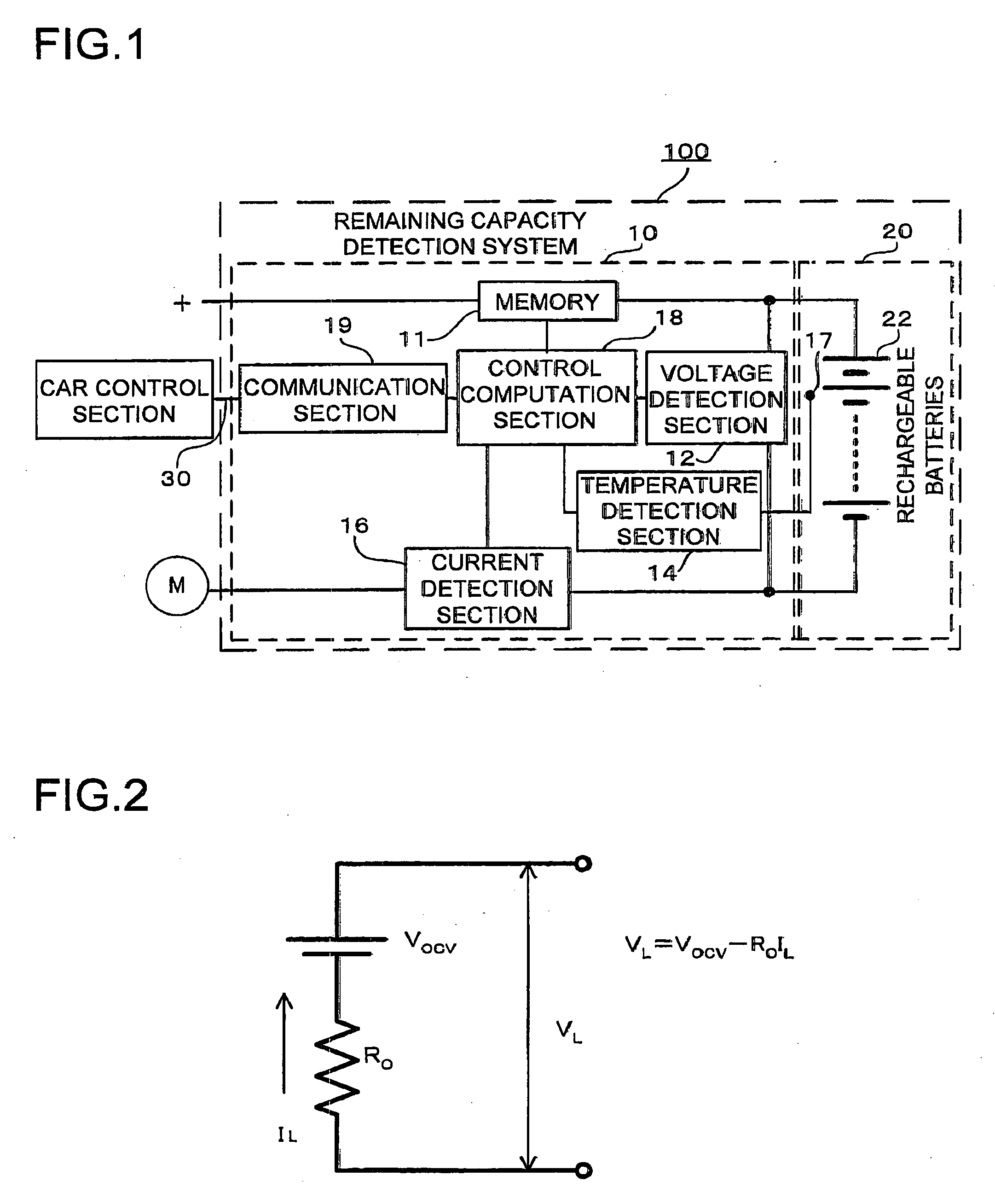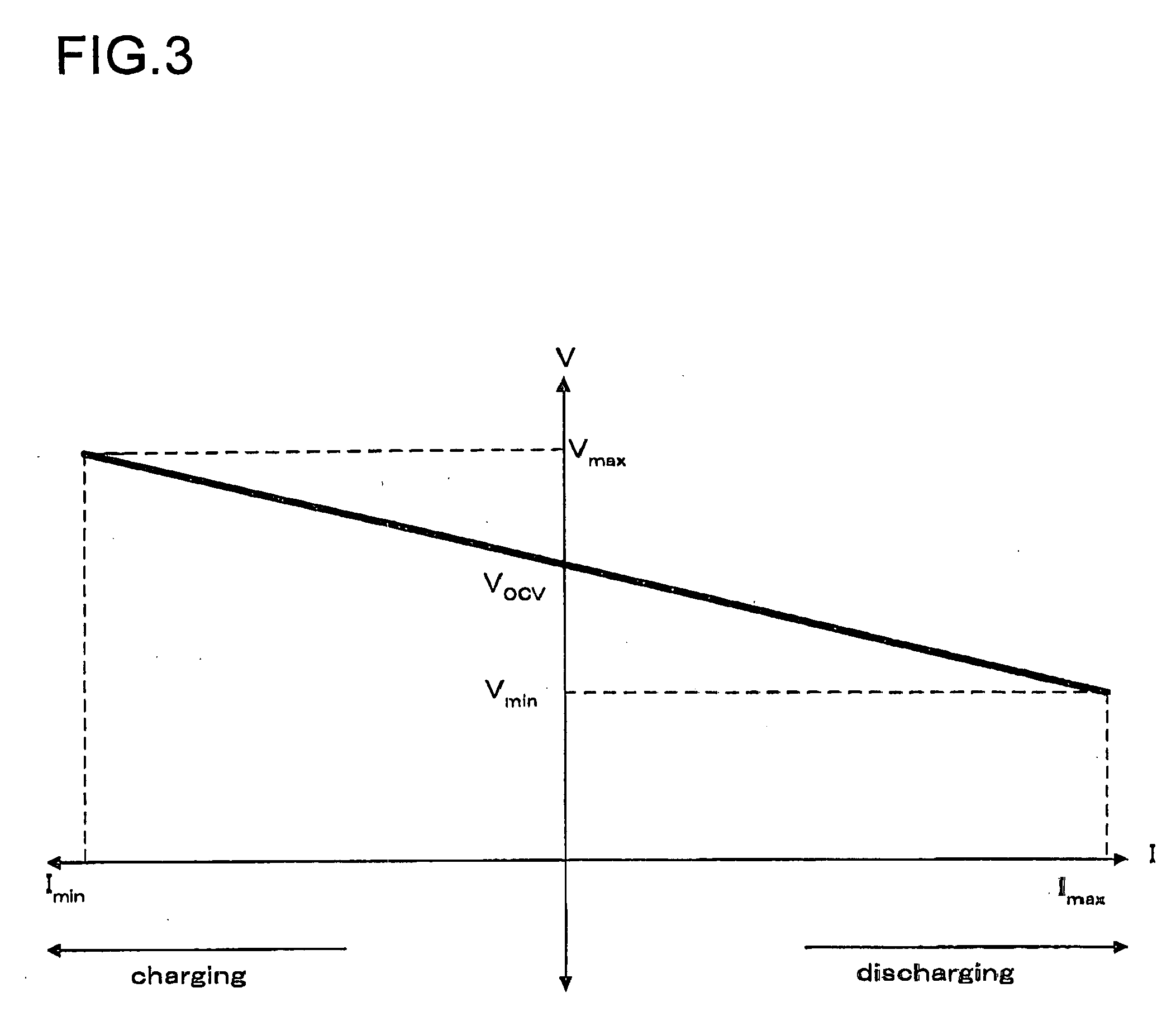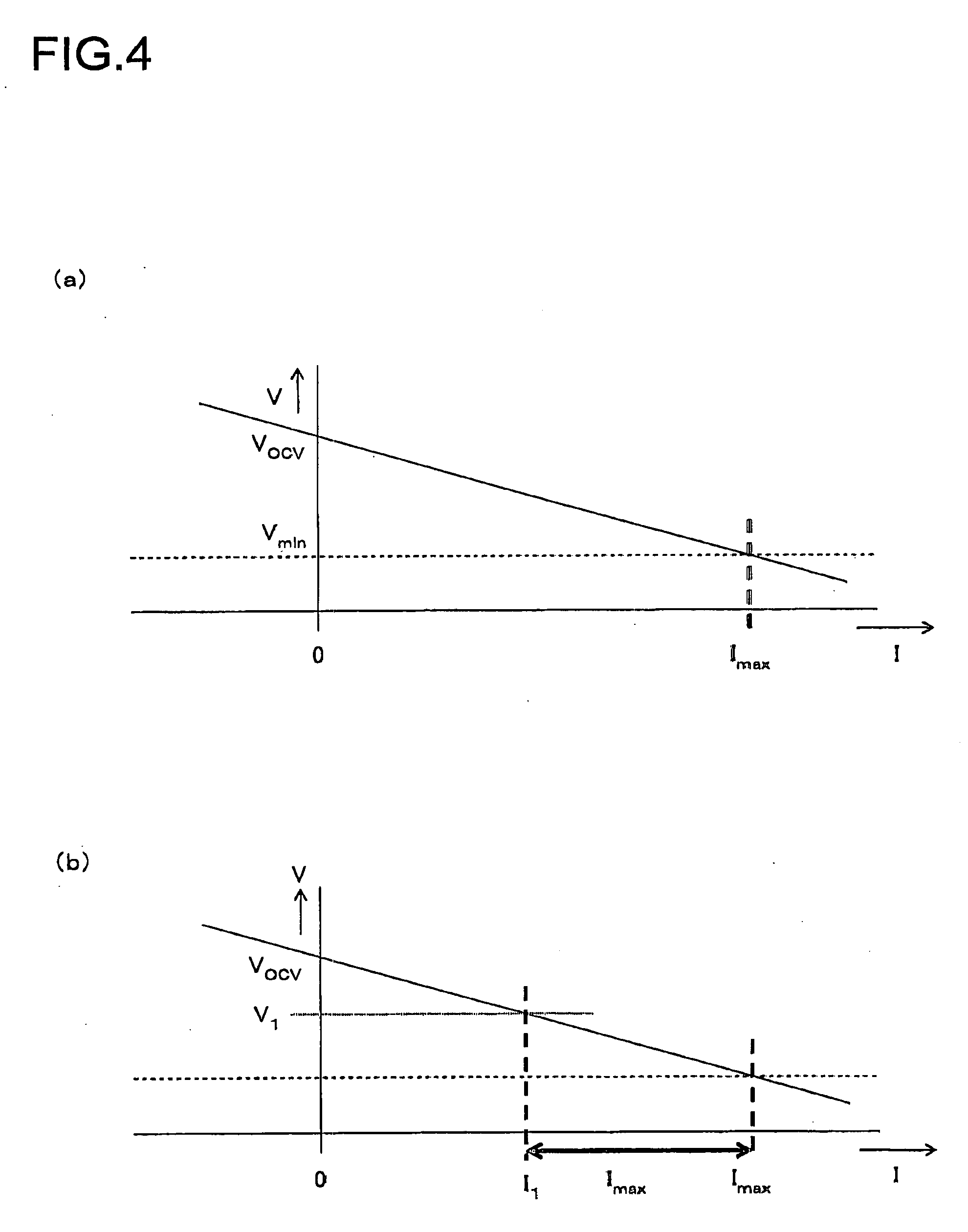Method of controlling rechargeable battery power and a power source apparatus
a technology of rechargeable batteries and power sources, applied in battery/fuel cell control arrangements, secondary cell servicing/maintenance, transportation and packaging, etc., can solve the problem of limited usable power
- Summary
- Abstract
- Description
- Claims
- Application Information
AI Technical Summary
Benefits of technology
Problems solved by technology
Method used
Image
Examples
Embodiment Construction
[0025] The following describes forms of embodiments of the present invention based on the drawings. However, the forms of embodiments indicated below are for the purpose of concretely demonstrating technical concepts of the present invention, and the method of controlling rechargeable battery power and power source apparatus of this invention are not limited to the description below. Further, components cited in the claims are in no way specified by components in the forms of embodiments. Components shown in the drawings may have there size or positional relations exaggerated for the purpose of making the description clear. In the description below, components which are the same or are of the same material may be designated by the same name or label, and their detailed description may be suitably abbreviated. In addition, concerning elements that make up the present invention, a plurality of elements comprising the same components may be represented in the form of one component used...
PUM
 Login to View More
Login to View More Abstract
Description
Claims
Application Information
 Login to View More
Login to View More - R&D
- Intellectual Property
- Life Sciences
- Materials
- Tech Scout
- Unparalleled Data Quality
- Higher Quality Content
- 60% Fewer Hallucinations
Browse by: Latest US Patents, China's latest patents, Technical Efficacy Thesaurus, Application Domain, Technology Topic, Popular Technical Reports.
© 2025 PatSnap. All rights reserved.Legal|Privacy policy|Modern Slavery Act Transparency Statement|Sitemap|About US| Contact US: help@patsnap.com



